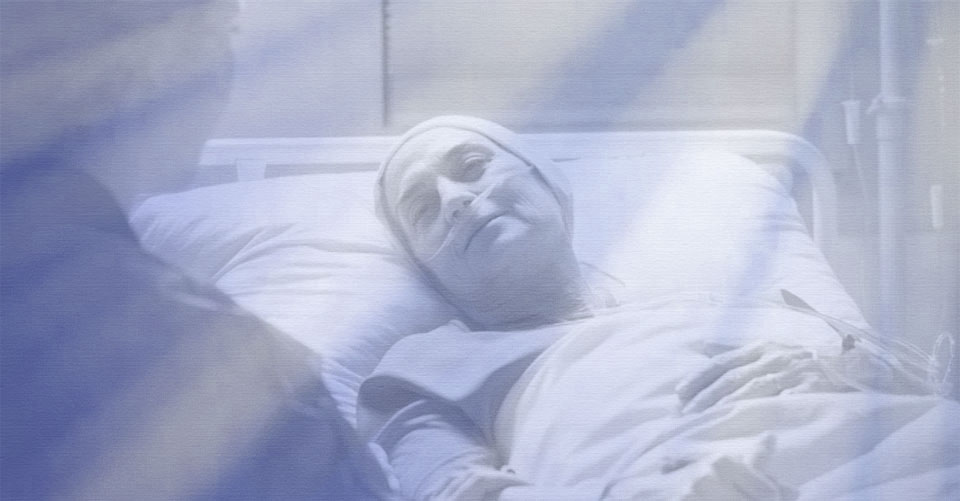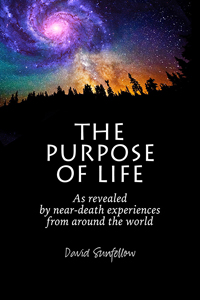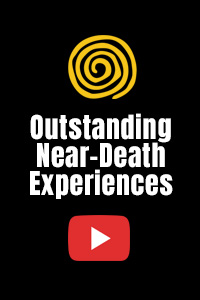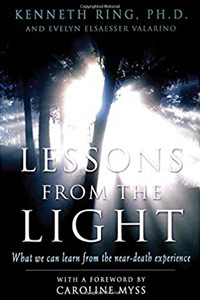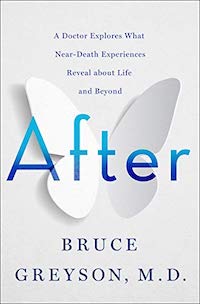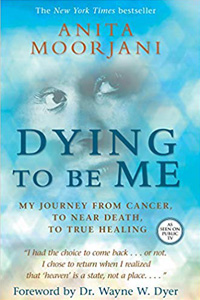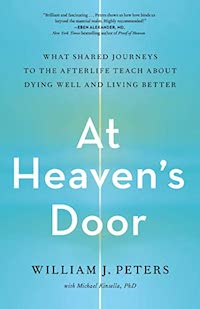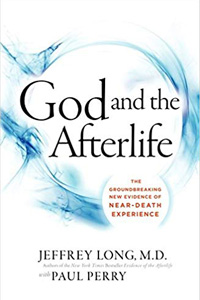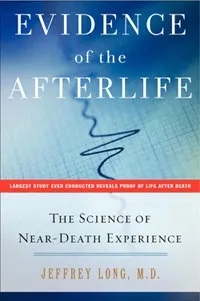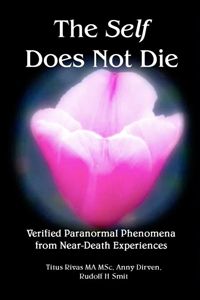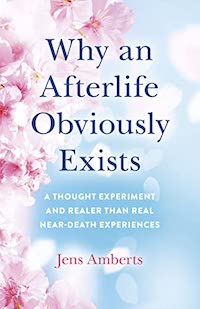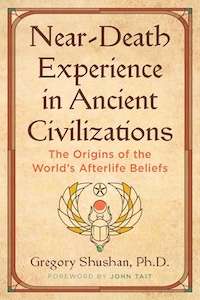…………
“We who must die demand a miracle.”
— W. H. Auden
…………
Miraculous Returns: Terminal Lucidity And The Work Of Alexander Batthyany
By Kenneth Ring, PhD
You are visiting your eighty-eight-year-old grandmother in her nursing home. For the last ten years she has been suffering from progressive and irreversible Alzheimer’s. For the last few years at least, she has been mute, unable to utter a single word, only to grunt at times. Her eyes seem sightless — milky, glassy, vacant. She has no idea who you are and doesn’t look at you, even when you hold her withered wrinkled hand. She is absent, just a living corpse strapped into her wheelchair. You wonder if it even makes sense to continue to visit her. What is the point?
It’s sad. You remember your grandmother as a vital, playful woman with a wicked sense of humor. In those days, her family meant everything to her. She relished Sunday evenings when the family would gather for its weekly dinner at her home. No more, and not for many years now.
You are about to leave when a movement catches your eye. Your grandmother is stirring. Her eyes open, seemingly trying to focus. You wait. In a few moments, her eyes clear and she seems to see you. And then — you can hardly believe it! — she begins to speak.
In a weak voice, she says, “I know I’ve been away for a long time.” And then, after a beat, she asks, “And how you are you? How are the children?” And she gives their names and asks how old they are now.
For the next half hour, your grandmother reminisces about her family and engages you in conversation. She even cracks a few silly jokes. You are completely astonished, dumbfounded. How can this be happening? Your grandmother is back with her personality fully intact. What is going on? How is this possible, given that her brain is completely defunct, full of plaques and tangles?
After a while, she seems to grow tired, and in a few moments, she appears to be deeply asleep. You leave her then to report to one of the nurses what you have observed. To your surprise, the nurse is not astonished. She simply nods; she has seen this before.
Together you go back to observe your grandmother, still apparently asleep. “No,” the nurse says, “she has died.”

Terminal Lucidity
We now know what has occurred. It now has a name. It is called “terminal lucidity.” It has been known for hundreds of years, but until recently it did not have a name. But we know now that, although rare, such seemingly miraculous, if temporary, returns to life in extremely demented people do in fact happen. Such events are as mysterious as they profound and provocative. But recently a number of researchers have begun to study and probe these mysteries, and in this blog you will be meeting some of them, including one who has become the leading investigator in this new field, a man named Alexander Batthyány.
But long before I became aware of him and his work on terminal lucidity (which I will now abbreviate TL), I was friends with an NDEr named Pam Kircher who was a medical doctor and had spent a lot of her time working in a hospice. During a conference where we met one year — it must have been sometime during the 1980s — I remember she told me about such a case involving an elderly demented man who had spontaneously awakened and became lucid shortly before dying. I was struck by her story and thought it was quite marvelous, but didn’t pursue it. In any case, for me at that time it was just a one-off event and there was at the time no term for it.
It wasn’t until about 2010 when, belatedly, I became aware of some researchers who had already begun to study this phenomenon on the basis both of historical accounts and those of the present day. The investigator who first brought TL to my attention and who coined the term is a German biologist named Michael Nahm who, it turns out, has long been interested in a variety of paranormal or anomalous experiences that seem to defy or at least challenge our conventional ideas of what is possible. In 2009, he published an article about his research, mostly of historical cases, in The Journal of Near-Death Studies in which he defined TL as follows:
“The (re-)emergence of normal or unusually enhanced mental abilities in dull, unconscious, or mentally ill patients shortly before death, including considerable elevation of mood and spiritual affectation, or the ability to speak in a previously unusual spiritualized and elated manner.”
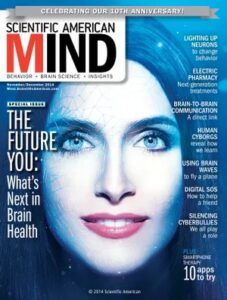 According to Nahm, such experiences had been known for millennia and were mentioned by such historical notables as Hippocrates, Cicero and Plutarch. Even Benjamin Rush, the eighteenth century physician (and signer of the Declaration of Independence) who wrote the first treatise on mental illness had observed such cases. But nobody thought to give them a name until Nahm despite the fact that quite a few instances of TL had been described by a number of nineteenth and early twentieth century physicians. Nahm’s historical research flushed out some eighty cases of TL over a period of 250 years. Here is one such example from that time, which Nahm summarizes. (I draw this account, however, from an article in The Scientific American.)
According to Nahm, such experiences had been known for millennia and were mentioned by such historical notables as Hippocrates, Cicero and Plutarch. Even Benjamin Rush, the eighteenth century physician (and signer of the Declaration of Independence) who wrote the first treatise on mental illness had observed such cases. But nobody thought to give them a name until Nahm despite the fact that quite a few instances of TL had been described by a number of nineteenth and early twentieth century physicians. Nahm’s historical research flushed out some eighty cases of TL over a period of 250 years. Here is one such example from that time, which Nahm summarizes. (I draw this account, however, from an article in The Scientific American.)
This extraordinary case [concerns] a young German woman named Anna (“Käthe”) Katharina Ehmer, who died in 1922. Her case is especially valuable because it was witnessed by two highly respected and influential local figures: Wilhem Wittneben, the chief physician at what was then one of the largest insane asylums in Germany (Hephata), and Friedrich Happich, the director of that same institution. Over the years, both Wittneben and Happich relayed the experience many times in speeches and writings, and their independent descriptions of the incident cross-verified each other.
Käthe was among the most profoundly disabled of the patients at the asylum. Happich paints a vivid picture of her mental status. “From birth on,” he writes, “she was seriously retarded. She had never learned to speak a single word. She stared for hours on a particular spot, then fidgeted for hours without a break. She gorged her food, fouled herself day and night, uttered an animal-like sound, and slept … never [taking] notice of her environment even for a second.” As if that weren’t enough, Käthe suffered several severe meningitis infections over the years that had damaged her cortical brain tissue.
Yet, despite all this, as the woman lay dying (shortly after having her leg amputated from osseous tuberculosis), Wittneben, Happich, and other staff members at the facility gathered in astonishment at her bedside. “Käthe,” wrote Happich, “who had never spoken a single word, being entirely mentally disabled from birth on, sang dying songs to herself. Specifically, she sang over and over again, ‘Where does the soul find its home, its peace? Peace, peace, heavenly peace!'” For half an hour she sang. Her face, up to then so stultified, was transfigured and spiritualized. Then, she quietly passed away.”
When I started to read Nahm’s work on TL, I became tremendously excited. I remember thinking that if I had still been able to conduct my own research, I would have been keen to undertake studies of TL myself – because I could see immediately that there was a connected between TL and NDEs. In any case, I had to find out more about this intriguing phenomenon and soon was able to track down an e-mail address for Nahm. Fortunately, he was delighted to hear from me and since his English turned out to be excellent, we quickly began a cordial correspondence that lasted for several years (and was renewed two years ago when Nahm, among several other European researchers, was planning a replication of my work on NDEs on the blind – until COVID quashed that effort, at least for now).
 By then, however, I had learned that my longtime friend and colleague, Bruce Greyson, about whom I have written in previous blogs, had already made contact with Nahm and had collaborated with him in a new study that drew on modern cases of TL. Here are just a couple of brief summaries of two such cases of people suffering from Alzheimer’s disease that they had learned about:
By then, however, I had learned that my longtime friend and colleague, Bruce Greyson, about whom I have written in previous blogs, had already made contact with Nahm and had collaborated with him in a new study that drew on modern cases of TL. Here are just a couple of brief summaries of two such cases of people suffering from Alzheimer’s disease that they had learned about:
The first case concerned an elderly woman who suffered from the illness for 15 years and was cared for by her daughter. The woman was unresponsive for years and showed no sign of recognizing her daughter or anybody else. However, a few minutes before she died, she started a normal conversation with her daughter, an experience for which the daughter was unprepared and which left her utterly confused.
The second Alzheimer’s case was remarkably similar. In this case it was a woman’s grandmother who had neither talked nor reacted to family members for a number of years until the week before she died, when she suddenly started chatting with the granddaughter, asking about the status of various family members and giving her granddaughter advice. Her granddaughter reported that “it was like talking to Rip Van Winkle.”
Synchronistically, I was able to furnish Nahm with still another instance of TL from my own family. During the time I was in touch with Nahm, my daughter Kathryn’s mother-in-law died at the age of 98. She had been suffering from dementia for the previous ten years or so. Kathryn, knowing of my interest in TL, sent me the following e-mail sometime after her mother-in-law’s death:
“The scenario is basically that Bill’s [Kathryn’s husband] mom, once a highly competent individual, became increasingly incompetent over the last few years. The onset was slow, noticeably starting in 2005, beginning with short term memory loss, putting things in strange places & throwing everything away to full-blown advanced dementia resulting in uncontrollable behavior, inability to reason, and inability to function in most ways. She could not sit still, she would wander all day and all night long; we put up baby gates to keep her out of the kitchen, and at night from getting to the rest of the house. She regressed to the mentality of an 18 month old, and was unable to put sentences together, often saying “I want” or “I need” with nothing else in the sentence. It was rare to get a full sentence out of her most of 2010, and even back in 2009 as we struggled constantly to figure out what she was trying to say. She had dropped from 120 lbs to 82 lbs. At 98, she began falling often, and finally fell on her side and broke her hip. In the emergency room, she was talking in complete sentences sometimes, i.e., “Get me a new leg.” That sentence in itself was amazing, but when Bill went out of the room, she turned to me and said, “Give me the bad news.” I did, telling her that her hip was broken. She said, “Oh my goodness”. She clearly understood. Several times after that, she told us she loved us, not to forget her, and that she won’t forget us, all in complete sentences that we hadn’t got out of her in months.”
We consider it a final gift to us, and although we didn’t realize it totally it at the time, she was saying good-bye to us that day. She knew what the broken hip meant; she knew it was the end. They came and gave her morphine, took her into hospice and 3 days later she died.
How I Met Alexander Batthyány
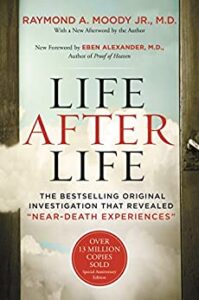 Some years later, I learned that another researcher of some eminence was engaged in a multi-national study of recent cases of TL that promised to set the gold standard for such research. At the time I first made contact with him, in 2019, he was planning to write the first book in English on the subject that I expected would do for TL what Raymond Moody‘s book, Life After Life, had done for NDEs, which was to introduce a worldwide audience to that topic. [I should note, however, that in 2012 Nahm had published a book dealing in part with TL, but it was only available in German.] Naturally, I was eager to learn more so I quickly discovered where to reach him and immediately upon my writing to him, I received a very friendly letter from this man whose identity you will now have guessed. This is how I met Alexander Batthyány.
Some years later, I learned that another researcher of some eminence was engaged in a multi-national study of recent cases of TL that promised to set the gold standard for such research. At the time I first made contact with him, in 2019, he was planning to write the first book in English on the subject that I expected would do for TL what Raymond Moody‘s book, Life After Life, had done for NDEs, which was to introduce a worldwide audience to that topic. [I should note, however, that in 2012 Nahm had published a book dealing in part with TL, but it was only available in German.] Naturally, I was eager to learn more so I quickly discovered where to reach him and immediately upon my writing to him, I received a very friendly letter from this man whose identity you will now have guessed. This is how I met Alexander Batthyány.
But imagine my surprise when I read his postscript:
“If I may add something personal: Thank you for writing your wonderful books on the NDE, and your contributions in general, also at the beginning of the NDE-movement. I often wondered when a history, or at least a photo book of the early days of the NDE movement around pioneers such as you — will be published, so that those who were not around back then, might at least capture a glimpse of the pioneering spirit of these times. Should this ever be something you’d allow or initiate or agree with, please count me in if I can be of any help. It would be an honour, a service to the history of ideas, and a personal way of paying back a lot of inspiration I owe to you and your work.”
Wow, I was thunderstruck! I had no idea that this man had even heard of me, much less that — as it turned out — he had become deeply interested in and knowledgeable about NDEs and knew all about those of us who had begun to develop the field of near-death studies following upon Moody’s truly pioneering work. Needless to say, our mutual admiration society began almost immediately and a long series of warm and lively exchanges was soon to follow.
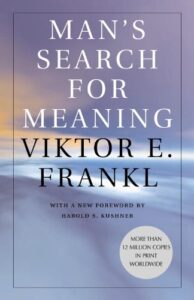 It wasn’t long before I learned that Alex, as I will call him here, was a highly regarded and indeed brilliant scholar. Among other things, he had personally known Viktor Frankl, the famous author of the classic book, Man’s Search for Meaning, which I had used as one of the texts in one of my courses at UCONN. When he sent me his professional resumé, which makes it clear how deeply he has been connected with Frankl’s work and legacy, I was able quickly to grasp the caliber of the person I was now dealing with and felt privileged to call my friend.
It wasn’t long before I learned that Alex, as I will call him here, was a highly regarded and indeed brilliant scholar. Among other things, he had personally known Viktor Frankl, the famous author of the classic book, Man’s Search for Meaning, which I had used as one of the texts in one of my courses at UCONN. When he sent me his professional resumé, which makes it clear how deeply he has been connected with Frankl’s work and legacy, I was able quickly to grasp the caliber of the person I was now dealing with and felt privileged to call my friend.
Prof. Alexander Batthyány, PhD, holds the Viktor Frankl Chair for Philosophy and Psychology at the International Academy of Philosophy in the Principality of Liechtenstein and is Director of the newly established Research Institute for Theoretical Psychology and Personalist Studies at Pázmány University, Budapest. Since 2012, Batthyány is on the faculty of the Moscow University Institute of Psychoanalysis, Russia where he is on the faculty as Professor for existential psychotherapy. He is Director of the Viktor Frankl Institute and first editor of the 14-volume edition of the Collected Works of Viktor Frankl. Batthyány has published over fifteen books and articles which have been translated into eleven languages. He lectures widely on philosophical and existential psychology, theory of cognitive science, and the psychology of death and dying.
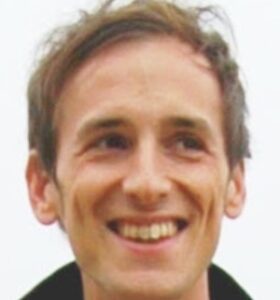 Alex lives in Vienna, is barely 50 years old, and if I were to give you a full listing of his scholarly work and accomplishments, it would take several more pages. But I trust this will suffice to demonstrate that Alex is a renowned scholar and, as I was soon to learn, a meticulous researcher.
Alex lives in Vienna, is barely 50 years old, and if I were to give you a full listing of his scholarly work and accomplishments, it would take several more pages. But I trust this will suffice to demonstrate that Alex is a renowned scholar and, as I was soon to learn, a meticulous researcher.
In an article he wrote in collaboration with Bruce Greyson, I had learned about the preliminary findings of his research project, but recently, when we had re-established contact after a gap of a couple of years, he was kind enough to share with me a draft of his forthcoming book. In what follows, and with his permission, I will be drawing on that book to give you a kind of preview of his findings and will then discuss the implications of his work for what they tell us about what happens at the advent of death.
A Brief Account Of Batthyány’s Research Project
To begin with, I can give only a very limited and brief summary here of Alex’s findings from the first really extensive research of contemporary cases of TL. His book, however, contains so much more than a report of his research data, but given my space limitations, all I can do is to invite you to read the book when it is finally published. However, I can tell you that his book is replete with many very moving accounts of TL in addition to his quantitative findings. So let’s begin to dig into both aspects of his research. 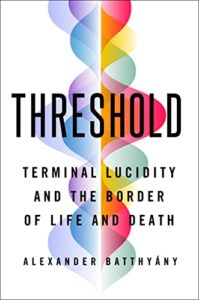
I learned that, although this was not the immediate impetus for Alex’s TL research, when he was a student he had his own TL encounter with a beloved grandmother. But to begin here with another illustrative case that Alex provides at the outset of his book, consider this story, which because of its length I had to abridge somewhat:
“My grandmother had suffered from Alzheimer’s dementia for several years. In the final stages of her illness, nothing much seemed to remain of the grandmother I knew and loved. At first, she could no longer recognise us. Eventually, she stopped speaking altogether and had to be fed, because she was no longer capable of eating unaided.
“On the day ‘the miracle’ happened, we reached the door, knocked, entered the room — and saw how my grandfather lovingly held my grandmother’s hand and, yes, spoke to her! At first, we just didn’t trust our eyes and ears. But then my grandmother looked at us one by one (all the five of us). Her large, beautiful eyes were perfectly clear. The haze of oblivion, of apathy, the ‘dead gaze’ had given way to an expression of limpid vitality. She who hadn’t recognised us for a year, who hadn’t even reacted when we visited her, addressed every one of us by name. On that day, however, my grandmother said in plain, clear German that she was glad to ‘be back’, and to see us.
“Then she looked lovingly at her husband, my grandfather, and asked us to take good care of him… She took his hand. I saw my grandfather’s face — thick tears were running down his cheeks. Between sobs, he barely managed to say: ‘I love you’. And she answered: ‘I love you!’ — and her gaze … I myself weep as I write this down, because I can see the clarity, urgency and love her eyes expressed that day as clearly as if I could see them now.
“This conversation lasted some 20 or 30 minutes. Then my grandmother lay back and soon fell asleep. When the phone rang the next morning, I knew before picking up, what the ward nurse was going to tell us. My grandmother had died peacefully in her sleep, at the age of 86. It was one of the most beautiful and wondrous and moving things I have witnessed to this day.”
There are many such stories in Alex’s book, and, collectively, they provide a very rich tapestry of these seemingly miraculous returns to full consciousness prior to death. Altogether, over a period of several years, Alex was able to receive some 214 cases from all over the world — from various countries in Europe, Asia, Africa, the U.S., etc. Respondents – hospice and palliative care nurses, other health care workers, family members — were asked to complete a detailed questionnaire but also to provide written summaries of the TL episodes they had witnessed.
Alex found that TL is definitely a final death-related event with most patients dying shortly after having re-awakened, sometime just a few minutes later but mostly within a couple of days. Moreover, when asked to rate the degree of lucidity of these patients, the overwhelming majority of the 214 participants in the study, 77%, were judged to have spoken clearly and coherently “like normal,” and some of the rest were still definitely intelligible. An additional finding of interest is that about a quarter of the patients were observed to show “an increased overall vitality and zest for life,” manifesting “increased energy and elation.”
As for the length of these TL interactions, they varied from less than ten minutes (18%) to several days, with the plurality of them falling between ten and sixty minutes (42%).
Finally, many respondents said that witnessing a TL in a beloved relative or friend was like receiving a “special gift” (just as my daughter, Kathryn, testified was true for her and her husband) and that they “felt overwhelmingly grateful for being granted an unexpected opportunity to say goodbye.” Indeed, the consoling power of these experiences was easy to appreciate from the many such accounts Alex provides.
Implications
By now, you should have a good sense of the nature of TL episodes and the effect they have on witnesses who are lucky enough to have these encounters. But what are we to make of them? How are we to interpret these miraculous returns to life, just prior to death?
In the space I have left, I will just give you my own view and do not mean to imply that Alex would necessarily share it. So I am speaking only for myself here.
The first point I need to make is that TL experiences do not stand alone. They are part of a complex set of experiences that occur with the onset of death. They are clearly related, for example, to near-death experiences, as indeed Alex notes in his book, and what used to be called deathbed visions (now often referred to as “nearing death awareness“) when dying people appear to see deceased loved ones coming to greet them, and seemingly offering to provide a kind of “escort service” to the next world. (My friend and NDE researcher, John Audette, playfully refers to them as “the welcoming committee.”)
NDEs and deathbed visions, however, are subjective and private, but TL is objective — you can witness it. But clearly with the advent of death mysterious — and thrilling — things begin to happen. The dying person seems to be transitioning into another reality during which the attachment to the body loosens and the limitations of brain-dependent consciousness is weakened and eventually transcended.
At this liminal point, hovering between the worlds, we are preparing to leave the temporal world — and the shackles of the body — and enter eternity, which is not everlasting time but timelessness. All these “intimations of mortality” (to alter Wordsworth’s famous phrase) are preparing us to leave this world behind. We are awakening from the dream of life into what NDErs tend to call “true reality.” I remember an NDEr saying to me, “I never felt more alive than when I died.”
This same man, struggling to find words to describe what it was like to be ushered into this world, told me:
“There was nothing but love … it just seemed like the real thing, just to feel this sense of total love in every direction.”
Returning to our TL accounts, it is true that only a relatively small minority of dying persons may be observed to have this miraculous experience, but the work on TL implies that after we die we all will awaken to find ourselves still alive, with our personalities intact, on the threshold of a love-saturated realm of eternity, our true home.
I personally am very grateful to Alex and other TL researchers (I could not mention them all) who have brought this phenomenon to light and thereby made us aware of yet another remarkable event occurring “at the hour of death” that evokes our sense of wonder and mystery. It was my pleasure to share this information with you and, if you’re interested to learn more, to invite you to pursue the topic further once Alex’s book is published (I’ll keep you posted!).
…………….
Jan Holden Interviews Alexander Batthyany About Terminal Lucidity
…………….
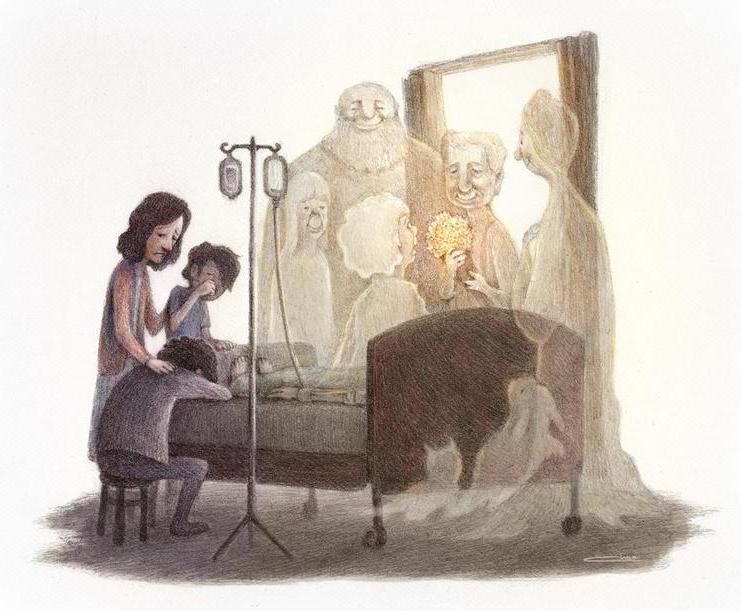
…………….
Related Links:
• Terminal Lucidity: Many Patients Experience An Unexplained Return Of Mental Acuity In Their Final Days (Emma Suttie, The Epoch Times, 06/11/2024) Download a pdf version of this article
• Threshold: Terminal Lucidity And The Border Of Life And Death (Book)
• Terminal Lucidity – The Case of Anna (Kathe) Ehmer
• The Death Of Anna Katharina Ehmer: A Case Study In Terminal Lucidity (pdf)
• Terminal Lucidity Reveals Mysteries About Consciousness
• Terminal Lucidity in People with Mental Illness and Other Mental Disability: An Overview and Implications for Possible Explanatory Models
• Near-Death Experiences Absolutely, Positively NOT Caused By Malfunctioning Brains
• When Loved Ones & Friends Pass From This World To The Next
• Near-Death Experience Researcher Kenneth Ring (About)
• Near-Death Experience Researcher Kenneth Ring (Website/Blog)
• Terminal Lucidity Researcher Alexander Batthyány
• Near-Death Experience Researcher Dr. Bruce Greyson


